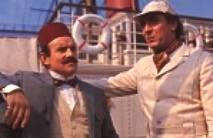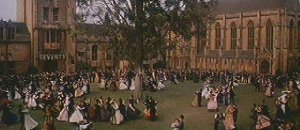|
|
WHERE ARE ALL THOSE
HIDDEN DIRECTOR'S CUTS?

I've been wondering for years, many people see movies in theaters first-run and many
others wait until they are available on video. Why don't they send the edited versions of
movies to the stores as usual, but later, put back the footage cut out due to time
constraints and release a second version - a director's cut if you will, for those
viewers who want to see everything? I'm just wondering why it is not done this way
all the time.
-- Quinne Darkover, Largo, Florida
The gist of your argument is completely true. It is common practice in the home video
market to restore cut scenes, director's versions, etc., to films to increase their value
in the home video market. This is obviously done to sell more home videos, but along
the way some good film history is preserved, and in some cases, movies are greatly improved.
It is especially true of older movies. Sam Peckinpah's long version of
Pat Garrett and Billy the Kid was released on laser and, I think, its reputation greatly
enhanced. The entire original four-hour
Heaven's Gate (below), once a notorious film,
is enjoying new popularity as a unique personal epic. The old swashbuckler
The Sea Hawk has had a number of scenes restored, a couple of which emphasize the topical
political reasons why the film was made! And Tobe Hooper's director's cut of
Lifeforce, seventeen minutes longer than its theatrical cut, makes what was a very
confusing story into a fairly compelling movie about space vampires.
All of these films have longer home video versions. Other notables:
Hawaii,
A Fistful of Dynamite, and
The Private Life of Sherlock Holmes (above).

So why not do this for all films? The flaw in that argument is that the majority of movies
do not have longer versions, cut scenes that need to be restored, or director's cuts
that have been set aside. When
Get Shorty was released on video, an extra cut scene was included on the laser by the
director purely for interest - but added after the film, and not in it. For recent releases of
Escape from New York, director John Carpenter gave us a glimpse of an entire sequence of
the failed crime caper that put Snake Plissken into Federal custody. The sequence was
shown in an added documentary, not put back in the film itself. The release versions of
Shorty and
Escape are the movies their directors wanted, and adding these scenes would have been
unfaithful to their intentions. In other words, the shots and sometimes scenes
that are left on the cutting room floor have sometimes ended up exactly where
everyone concerned, including the director, believes they belong.
But some films work out exactly as you describe. I was told that Clive Barker was
delighted when a number of scenes were added to his
Lord of Illusions for video, scenes which he felt the less time-constrained, lets-see-it-all
mood of video warranted.
Go BACK to the Savant Index of Articles.
Text©Copyright 1997 Glenn Erickson
DVD Savant Text © Copyright 2007 Glenn Erickson
|








